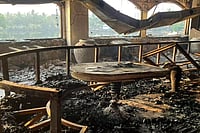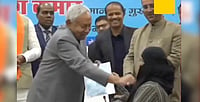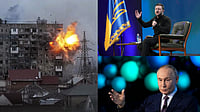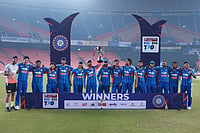Crime Against Humanity
Volume 2 An inquiry into the carnage in Gujarat -- Findings And Recommendations by Concerned Citizens Tribunal -Gujarat 2002
Violence Against Women
1.1. A distinct, tragic and ghastly feature of the state sponsored carnage unleashedagainst a section of the population, the Muslim minority in Gujarat, was the system-atic sexual violence unleashed against young girls and women. Rape was used as aninstrument for the subjugation and humiliation of a community. A chilling technique,absent in pogroms unleashed hitherto but very much in evidence this time in a largenumber of cases, was the deliberate destruction of evidence. Barring a few, in mostinstances of sexual violence, the women victims were stripped and paraded naked,then gang-raped, and thereafter quartered and burnt beyond recognition.
1.2. In one of the fallouts of the hatred unleashed by the rath yatra led by Shri LKAdvani for the Ramjanmabhoomi and following the demolition of the Babri Masjid inAyodhya, on the night of December 8-9, 1992, a predominantly Muslim basti in Suratwas subjected to a concerted attack, during which at least one dozen women weregang raped by trishul-carrying mobs. Even a Hindu woman, also a resident of the samelocality, was not spared. In the pogroms unleashed under the directive of Shiv Senasupreme, Shri Bal Thackeray in Bombay in January 1993, too, at least three cases ofcommunally-driven rapes have been documented, both in the People’s Verdict (reportof a Citizens Tribunal headed by Justice SM Daud and Justice Hosbet Suresh, bothretired judges of the Bombay High Court) and in the report of the officially appointedJustice BN Shrikrishna Commission of Inquiry.
1.3. Even during the horrors of violence unleashed during Partition, driven to afrenzy of hatred, Hindu, Muslim and Sikh mobs used rape as a form of subjugationand humiliation of the ‘other community’.
1.4. While the large number of cases of sexual violence perpetrated during thestatewide carnage in Gujarat is shocking, the trivial and dismissive manner in whichthis chilling pattern evidenced all over the state was dealt with by the CM and hiscabinet, the authorities as a whole in Gujarat and, worst of all, by ministers in thegovernment of India, make it doubly so.
1.5. The Tribunal notes with concern and outrage the shocking remarks made bythe union defence minister, Shri George Fernandes on the floor of the Lok Sabhaduring the debate on the Gujarat carnage. He said, “There is nothing new in themayhem let loose in Gujarat… A pregnant woman’s stomach being slit, a daughterbeing raped in front of a mother aren’t a new thing.” Such things, Shri Fernandes said,have been happening for 54 years in India and happened even on the streets of NewDelhi in 1984. (Lok Sabha debate on Gujarat, April 30, 2002, reported on May 1 inThe Hindu, The Indian Express, the Deccan Herald and The Times of India.)
1.6. The Tribunal recorded with pain the statements of women from all over Gujaratwho had either themselves been subject to sexual violence or were direct witness toit. Many of the over 33,000 children forced to live as refugees in relief camps throughoutthe state were also witness to the most debased and brutal forms of violence. Theywere mute witnesses to gross gender crimes perpetrated on their near and dear ones— sisters, mothers, aunts and even grandmothers — with gory and military precision,evidence of some sick minds and a vicious ideology. The Tribunal shudders to thinkof the impact of this on young and impressionable minds.
1.7. Women victims of the carnage from Saijpur Patia, Naroda, Chamanpura,Behrampura, Danilimda, Gomtipur, Vatwa, Narol, Shah-e-Alam, Millatnagar andBapunagar in Ahmedabad city deposed before us. Not only had they been victims ofviolence that took the lives of their near and dear ones, their dignity was made a specialtarget and their homes and belongings, collected painfully over the years, were lootedand then destroyed. They have been forced to become refugees in their own homeland.
1.8. In Saijpur Patia, Naroda, on February 28, a mob of around 25,000 surroundedthe Muslim areas at nine in the morning. They instigated the attacks by pelting stonesat the residents — working class Muslims who had been living there for over 60 years —throwing acid and petrol bombs at them. Thereafter, they forcefully entered the lanes,shouting slogans against Muslims, implying that they are terrorists and that they shouldnot be allowed to live in this country. They were also shouting the slogan, ‘Jai Shri Ram!’.The mobs were armed with sharp swords, spears, tridents, chemicals, petrol cans, kero-sene and private firearms. Residents tried to defend themselves and their homes with theavailable stones but could not do so for long. The mob then went on a rampage, lootingand burning houses. They then started killing people, first cutting them up with swordsand then burning them saying, “We will even spoil your deaths.” Evidently, this was notspontaneous, but a premeditated attack meant to subjugate or even obliterate a wholecommunity. Muslims do not burn their dead, they bury them. The widespread use of arsonand burning was part of a methodology to annihilate a community’s culture and beliefs.
1.9. When the residents of Saijpur Patia, Naroda, tried to escape, they were sub-jected to the mass rapes of their sisters, wives, mothers and daughters. The helplessmen — brothers, sons, fathers and husbands – were first humiliated and then killed.
1.10. The police, instead of firing on the assailants and protecting lives, misdi-rected the terrorised people and lead them towards armed mobs waiting for assault.Those who ran in the direction indicated by the police are no longer alive.
1.11. According to the evidence recorded by the Tribunal, the leaders of the mobs(many of whom have been identified) even raped young girls, some as young as 11years-old. The young girls were made to remove their clothes in front of 1,000–2,000strong mobs who humiliated and terrorised the girls. Thereafter, they were raped by 8-10 men. After raping them, the attackers inserted sharp swords, knives or hard ob-jects into their bodies to torture them before burning them alive. In the many bouts of communally incitedpogroms that have taken place in different parts of the country,never has there been this depth of perversion,sickness and inhumaneness. Even a 20-day-old infant, or a foetus in the womb of its mother, was not spared.They flungbabies in the pyres that they had prepared. They cut up people, threw then in a well known as ‘teesra kuva’and then burnt them. The police supported the mob during theassault by shelling tear gas shells on the hapless Muslims. They also opened fire on men when they were tryingto defend the women in the area. The State Reserve Policewas very complacent and indifferent saying, “We have been given orders to do noth-ing for 24 hours in Naroda.”Women pleaded with the police and the SRP to stopacting partially and save the children at least. They begged before these policemen, laying their children attheir feet, but it made no difference to them.
1.12. The sinister aspect of these gender crimes is that they have been led and directedby elected representatives and prominent leaders of the BJP, RSS and VHP. (See section onIncidents of Violence, Volume I). This means that the dominant political leadership of ourtimes is actually creating or displaying role models that glorify gender crimes against women.Can any civilised society witness this without finding an urgent need to punish those guilty and making adetermined effort to purge public life of these perversions?
1.13. In the attack on February 28 on Gulberg Society, Chamanpura, Ahmedabad,where a former Congress member of Parliament was a specific target, there were atleast 10-12 cases of girls and women who were gang-raped, assaulted with swordsand rods and quartered before being burnt to ashes.
1.14. Similarly, on March 1, in Fatehpura village outside Sanjeli, and in Morwa inthe Panchmahal district, women were gang raped by mobs. Fatehpura is one villagewhere, among the survivors, are many women victims of gross gender crimes.
1.15. The infamous BEST Bakery incident that occurred in Vadodara on the nightof March 1, when 14 persons were quartered and burnt (the attack took place after ajeep of the Vadodara Panigate police had driven past at 9 p.m.) also involved threecases of communally-driven rape.1.16. At the mass grave that was dug on March 6 to provide burial to 96 bodies fromNaroda Patiya, 46 women were buried.
1.17. A rape victim from the Godhra relief camp told a tale that seemed to confirma recurrent pattern in most places, according to survivors’ accounts. She was stripped,gang-raped, her baby was killed before her, she was then beaten up, then burnt andleft for dead. For variety’s sake, other women also had acid thrown upon them, andthen burnt in fires. A womens’ fact-finding report sums up the usual procedure: “..rape,gang rape, mass rape, stripping, insertion of objects into their body, molestation… amajority of rape victims were burnt alive.”
1.18. Before they were finally killed, some were beaten up with rods and pipes for almostan hour. Before or after the killing, their vagina would be sliced, or would have iron rods pushed inside. Similarly, their bellies would be cut open or would have hard objects in-serted into them. A 13-year old girl, had a rod pushed into her stomach, and was thenburnt. A mother reported that her three-year old baby girl was raped and killed in front of her, whileelsewhere daughters reported on the rapes of their mothers, now dead. Kausar Bano, a young girl from NarodaPatiya, was several months pregnant. Several eyewit-nesses testified that she was raped, tortured, her wombwas slit open with a sword todisgorge the foetus which was then hacked to pieces and roasted alive with the mother.
1.19. Evidence placed before the Tribunal also shows how, on March 17, after theafternoon namaaz, the police unleashed a reign of brutality and terror on women and young men of the Danilimdaarea around Ahmedabad. Eleven boys were arrested onthat day, without reason, when they were returning to their homes after praying at the masjid. About 500 womenfrom Danilimda and Shah-e-Alam went to Danilimda po-lice station to urge the police to release them. Initially, the police tried to send the women back sayingthat the boys have been transferred to Haveli police station. Whenthe women repeatedly pleaded, argued and asked for the reasons for which they were arrested the police toldthe women, “You wait here, we will go and bring back theboys”. They went in three police jeeps, returned with two additional jeeps full of policemen and immediatelyresorted to lathi charge. They beat the women severelywith lathis and butts of their guns, constantly using very abusive and offensive lan-guage. In all, 53 womenwere severely injured in the attack. Terrorised with furtherimplications if they went to any hospital for treatment, these women were forced to nurse their wounds withhome made remedies.
1.20. Evidence before us also shows that on February 28, armed mobs attackedMuslim homes in Gomtipur, in the Ambika Mill na Chapra and Nutan Mill na Chapracolonies. They looted and burnt houses. They were in such large numbers that thepolice pleaded that defence was impossible. Police behaviour indicated no desire toprotect the lives of those targeted. On March 2, the residents of Patel ki Chali inGomtipur closed the two main entry gates to their area, and the women gatheredoutside their homes guarding their men and their houses from both the police and themob. The police entered by jumping over the gates. Head constable Narayan Modiwas leading the police. He is the head constable in ‘D’ staff in Gomtipur police sta-tion. When the women protested against his entering the area without any reason,Shri Modi used a very cheap and vulgar trick to humiliate and outwit the protestingwomen. He and his fellow policemen pulled down their trousers and started mouthingvery offensive and indecent language. Encouraged by the disgusting conduct of thepolice men, the mob gathered outside the gates did the same.
1.21. Again, in the third round of violence from April 2 to April 5, the minoritycommunity living in Mariam Bibi ki Chali and Chotalal ki Chali constantly faced thedanger of getting killed and burnt. Shri Narayan Modi, the head constable of the ‘D’staff, leading a posse of policemen and some jawans of the Rapid Action Force (aspecialised wing of the police, specially created to combat communal conflict), at-tacked these areas, severely beat up the residents with lathis and the butts of theirguns and then stripped themselves in order to insult and humiliate them. This behaviourof the police towards women of the minority community had also been recorded insome incidents of the post-demolition violence that rocked Ahmedabad in 1992. Butthe scale and frequency of such shocking misconduct during the state sponsored car-nage this time makes itmost deplorable. It shows not just lawless behaviour by the police, but an identification with the ideology ofhate and humiliation that instigated this and earlier bouts of violence against the minority community inGujarat. Thiskind of behaviour by the police has completely alienated the entire minority commu-nity in Gujarat. Women,especially, feel fear, humiliation, disgust and anger at this.
1.22. Evidence before us shows how, especially in the Gomtipur area of Ahmedabad,the police even molested elderly women. Women managed to escape a worse fate only by constantly escaping tothe relief camps. Once they had left the area to protect their lives and dignity, the assailants burnt downtheir houses. The police in Gomtipur regu-larly used this trick of stripping to make women flee the area, sothat they could detainthe men and the boys and destroy property, since women were the ones who were trying to defend their homes andthe lives of their husbands and sons. Until August 12, whenPresident APJ Abdul Kalam visited the area and women complained of no rehabilita-tion measures having beenundertaken in Gomtipur, it was apparent that the state ad-ministration and the government had completely turned their eyes away from any sort of rehabilitation orcompensation. During their tours of the state, both the Presidentand the Chief Election Commissioner, Shri JM Lyngdoh evidenced the unchanged state of their homes a full sixmonths after they were looted, destroyed and burnt down.
1.23. Evidence placed before the Tribunal shows that in the later phases of violence,even in Vadodara city, vulgar and brutal behaviour of the police with women of the minority community wasrecurrent. Evidence on record shows that from March 15 onwards, the Vadodara police played a prominent role interrorising Muslim residents in their localities through combing operations and illegal arrests. Women, inparticular, were sub-ject to oppressive forms of harassment in their homes, especially when their men had either fled or were away.One case of a pregnant woman, about to deliver, as narrated byher mother, was especially poignant. On the night of April 30, she was brutally beaten with lathis and thebutts of rifles, especially on her breasts. Though she had carried thebaby to full term, this episode, in all probability, caused her to go into premature labour the next day andshe delivered. With tears in her eyes, her mother recounted to the Tribunalhow, when breast feeding her new born infant, while milk flowed from one breast, blood oozed out from theother, scarred by the beatings from the merciless Vadodara police.
1.24. Apart from physical beatings, Muslim women in localities of Vadodara weresubject to sexual and communal threats; policemen used highly abusive language be-fore they vandalised theirhomes. The Bahar colony at Ajwa Road, Rain Bassera, Machchipith under the Karelibaug Police Station, as wellas areas under the jurisdic-tion of the Panigate Police Station were especially vulnerable to this sexuallyper-verse and violent behaviour of the Vadodara police.
1.25. The sexual assault on Muslim women in Gujarat since February 27, has to beseen in the context of the carnage carried out by the right wing Sangh Parivar with total state complicity.Violence against the minority community assumed various forms:mass killings, sexual humiliation — including gang-rape — of women, brutal attackson children, and attacks on the very survival of the minority community through looting, burning anddestruction of their property and means of livelihood.
1.26. Evidence before the Tribunal shows that women have suffered the most bestialforms of sexual violence, including rape, gang rape, insertion of objects into their bod-ies, stripping, andmolestation. A majority of the women who suffered this violence were then burnt alive. Amongst the survivors,many have spoken about the assaults but many have been silenced, for fear of further attacks and for fear ofcensure from theirown families and community. Besides the lack of faith in the system of justice, the humiliation faced by womenwho dare challenge taboos and demand punishment forgender crimes like rape have silenced the natural cry for retribution and justice.
1.27. These crimes against women have been grossly underreported and the exactextent of these crimes in rural and urban areas, has yet to be grappled with. These attacks have been carriedout in the presence of, in many instances even at the behestof, the police and other state authorities.
1.28. In Gujarat, the degree of violence and sexual crimes against women reachedunprecedented levels. Women, and entire communities, have been so traumatised and silenced that the fullextent of this has yet to be realised. Mental trauma as well asinsecurity of an extreme form are issues that need to be dealt with. The ineffective-ness and insensitivity ofour criminal justice system, particularly when it comes tosexual and other crimes against women, renders the victim, her family and even the entire community in casesof mass and planned crimes of this sort, especially vulner-able. These crimes call for not simply a re-orientation in thinking and values in the matter of justice to thevictims and punishment to the guilty; also urgently needed ispsychological and trauma counseling for some sort of a healing process even to begin.
1.29. That sexual crimes against Muslim women took place on such a large scale inpost-independent, democratic and secular India is shocking in itself. What is far worse is the shamefultrivialising or denial of these crimes by agents and representatives ofthe central and state governments and outfits like the BJP and its affiliates like the RSS, the VHP and theBajrang Dal. This amounts to a virtual condoning of such grosscrimes against women.
1.30. Attacks on children were used as instruments of terror. In what is surely themost perverse dimension of the violence, children were used to torture and terrorise victims. In oneparticularly tragic incident in Tarsali, an old Muslim man was shownthe head of his beheaded son on a tray before he was himself brutally slain. Another woman, surrounded by amob, had to watch as her son, who had climbed up a tree toescape the mob, was brought down, his fingers cut off and the rest of his body dis-membered in her presence — all before she herself was killed. In many cases, childrenwere beaten and abused in the presence of their parents. Even the police did notspare small children — they were beaten with lathis, kicked and abused, and in onecase, even flung across a room. Young children who were badly beaten by the policewere in a state of shock weeks after the incidents.








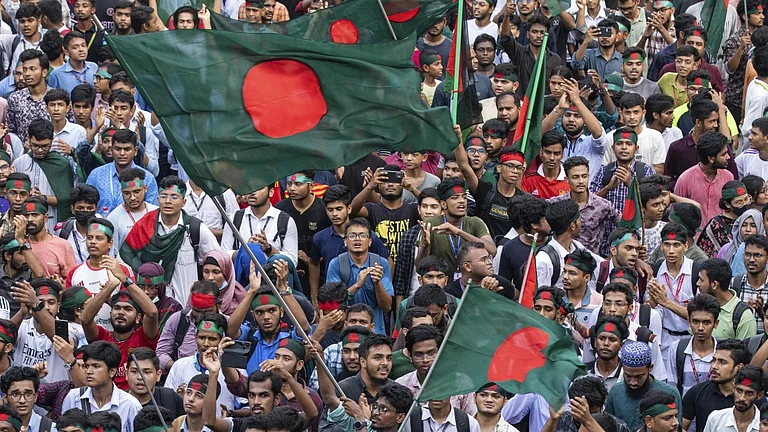



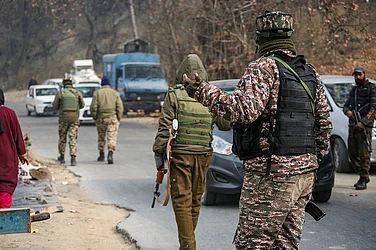





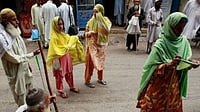
_.jpg?w=200&auto=format%2Ccompress&fit=max)
